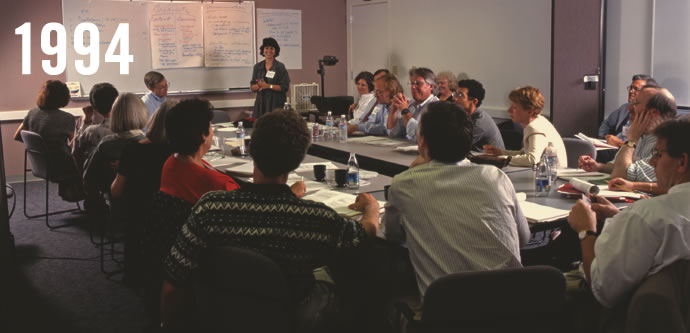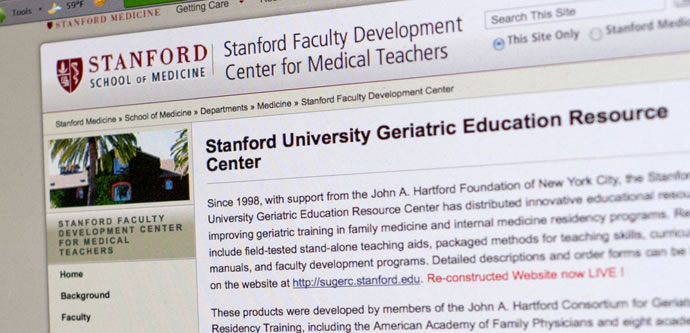CHANGE CURRICULUM

Geriatrics in Primary Care Residency Training
1994-1998 After receiving a medical degree, the next step is residency training. During this training period, the resident physician practices medicine under the supervision of licensed physicians.
To increase the geriatric knowledge of resident physicians specializing in internal medicine or family practice, the Hartford Foundation provided $5.4 million to support seven sites to develop innovations in geriatric education. They created computer-based learning modules, pocket cards for easy reference, new instructional materials, exams, rotations, and training exercises for use in residency training programs. The Stanford University School of Medicine served as the resource and coordinating center for the initiative.
Materials developed through this initiative were recently updated and are still available through the Stanford University Geriatric Education Resource Center (sugerc.stanford.edu). In 2001, Stanford University received a grant from the Hartford Foundation to train faculty to improve teaching of geriatrics.
(Top) In 1997, Stanford’s Faculty Development Program, collaborating with seven sites, met to develop a dissemination plan for geriatric training models for primary care residency programs.(Below) Materials developed to increase geriatric knowledge of resident physicians are available on the internet.
